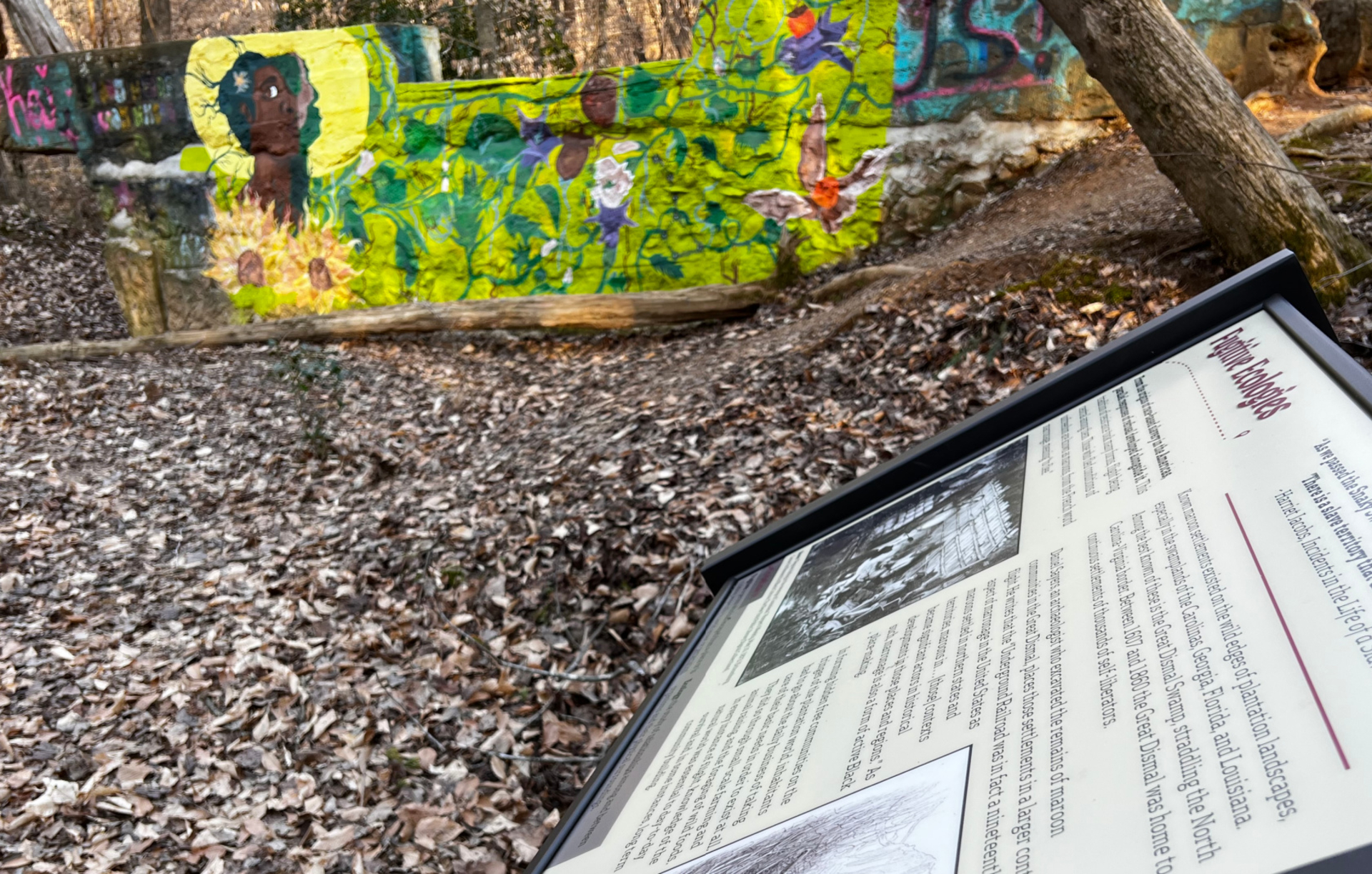
Several signs along the trails in Guilford Woods explain the types of edible plant life that was available to enslaved Africans along the Underground Railroad trail.
Visitors in Guilford's Woods can learn more about the journey of enslaved Africans as they made their way to freedom thanks to a federal grant.
“So many groups of people have come together through generations to create change for each other. We’re not any more special, just the latest.”
Nearly two dozen students and alumni have helped turn a popular trail in the Guilford College Woods into a classroom with new signage and a mural to help explorers better understand the Underground Railroad and its history with the College.
The signs and mural were funded by a grant from the National Park Service’s Underground Railroad Network to Freedom, says Tony Van Winkle, an Assistant Professor of Sustainable Food Systems and Environmental Studies. “I’m really pleased with how things turned out, and it was nice to have so many Guilford connections involved,” says Tony. “It was a great group effort.”
Breyanna Moore ’24 provided the inspiration for the mural with a drawing and painters Alyzza May ’10 and Terri Jones ’19 transferred Breyanna’s vision to a cement wall at the dam ruin in the woods. Other students drew pen-and-ink drawings of native foliage in the woods that visitors can learn about from QR codes along the trail. Students in two of Tony’s classes compiled the research that can be found on the signs.
The current Underground Railroad trail is about a half-mile long and will be connected to the main gravel trail near the dam with funding from the grant. Most of the trail improvements will be tied into an Ethnobotany class being taught by Tony.
Ethnobotany is the study of how people have known, used and interacted with plants through time and space, in this case the freedom seekers who used Guilford’s woods on their journey North. Along the way they relied on the woods to conceal themselves, to find food and heal themselves, and evade capture by connecting with and understanding the nature around them, says Tony.
Alyzza says in the current political environment, the story of the Underground Railroad and the College's 350-year-old witness Tulip tree itself is important. “To be able to be part of the story telling under that tree that has witnessed so much was special,” Alyzza says. “So many groups of people have come together through generations to create change for each other. We’re not any more special, just the latest.”

